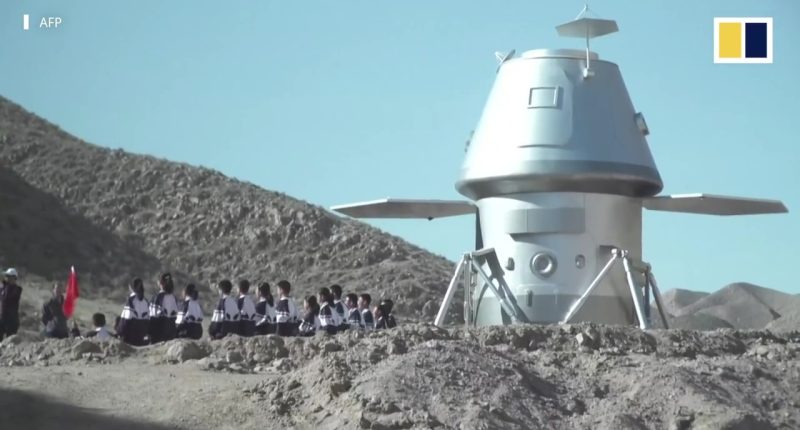CHINA has built a 20 storey tall nuclear space engine to power a mission to Mars.
Boffins have reportedly been ordered to “innovate” the project “or die” as the nation sets the stage for a new era in the global space race.
Following a collaboration of more than ten research institutes and universities, China believes it has made huge strides towards interplanetary travel.
According to a report from the South China Morning Post, the research team has confirmed it’s prototype lithium-cooled nuclear reactor system has passed initial ground tests.
The 1.5 megawatt-class fission reactor, which is seven times more powerful than a rival system being built by NASA, has been shrunk to an unprecedented size.
In a paper published by the Chinese Academy of Sciences’ peer-reviewed journal Scientia Sinica Technologica, it’s explained how the lithium-cooled system is also designed to drastically expand in space.
Read more in Science
By using liquid lithium, they can also make the reactor smaller, thanks to the element’s high thermal conductivity and low weight.
Starting out as a container-sized volume, the structure can grow as large as a 20-storey building once fully deployed, including the 1.5 megawatt reactor’s heat sink.
But on the ground, it will fold neatly into a container-sized volume, weighing less than eight tonnes, the paper said.
Furthermore, the design makes the reactor system “easy to load and launch by rocket,” while it will also be able to maintain stable operations in the harsh environments of space for extended periods.
Most read in Science
The paper adds that the Chinese reactor will generate up to 1,276 degrees Celsius through the fission of uranium fuel, far exceeding the operating temperature of most commercial nuclear plants.
The intense heat then expands liquid forms of the inert elements helium and xenon into gases, driving a generator.
The paper adds that high-mass, round-trip transport will be possible for both crewed and cargo space flights.
As a result, the powerful energy source will open the way for China’s large-scale exploration of the moon and Mars.
China’s determination to lead the race for nuclear-powered space travel is implemented further with a slogan hanging above the prototype reactor that reads: “Innovate or perish. No excuses.”
While spacecraft like the Starship being developed by US company SpaceX could take at least seven months to reach Mars, China’s nuclear-powered spacecraft could complete a round trip in just three months.
The Starship rocket is central to Nasa’s plans for landing astronauts on the moon later this decade, as well as SpaceX CEO Elon Musk’s hopes of colonising Mars.
However, even a one-way trip to the red planet would need an enormous life support system.
Nasa confirmed that the first Blue Origin New Glenn rocket will send two scientific spacecraft to Mars in late 2024, while Musk considers 2026 as the earliest year SpaceX will launch its own uncrewed mission.
The new timeline comes after Musk’s Starship mega-rocket – the craft that he hopes will land boots on the Moon and eventually Mars – blew up in a second launch attempt.
Nasa has also called for volunteers to live in a simulated Mars colony for an entire year to boost preparations for future living on the red planet.
READ MORE SUN STORIES
The Earth-based mission is due to kick off in early 2025 and will see a four-person crew living inside a 1,700-square-foot facility – just like one that would be built on Mars.
Nasa says it “simulates a realistic Mars habitat” with the goal of supporting long-duration explorative missions in space.
This post first appeared on Thesun.co.uk
















